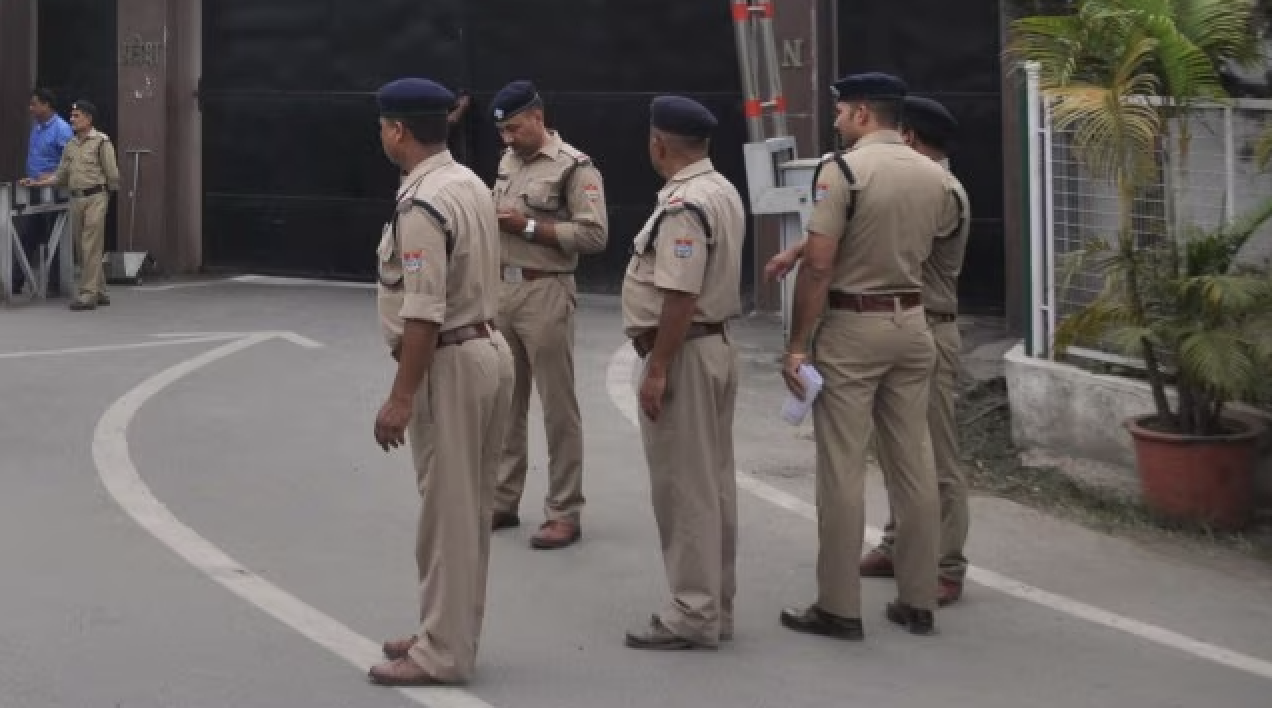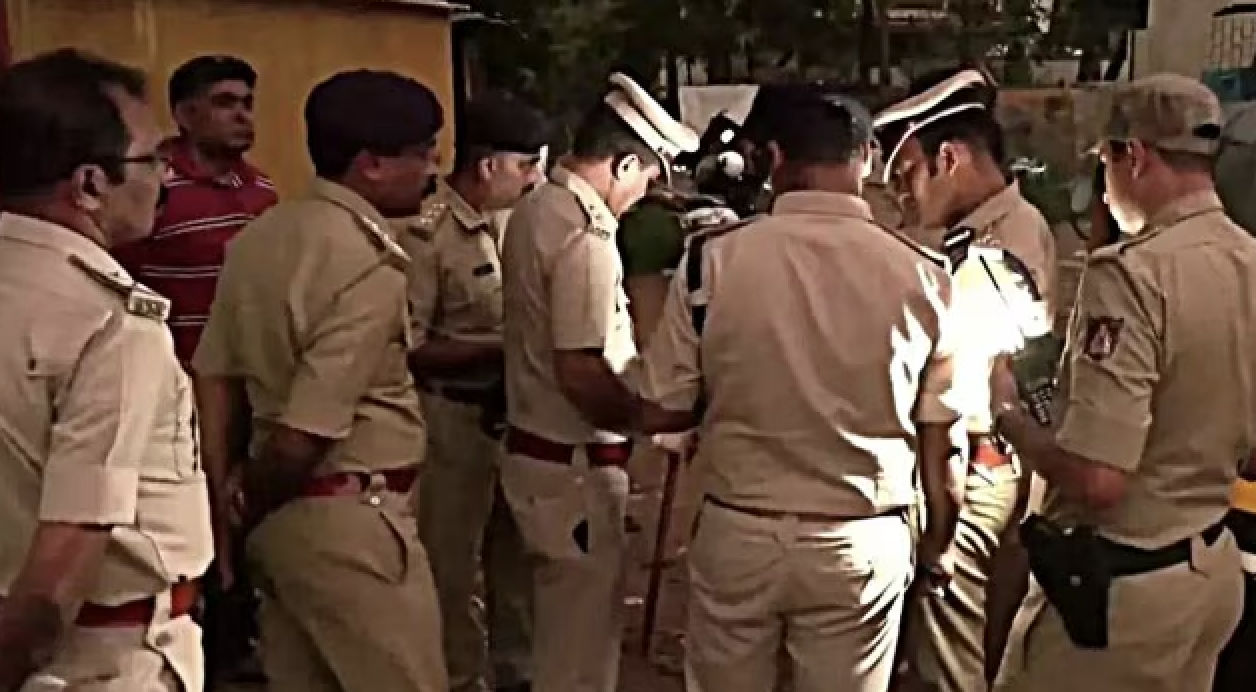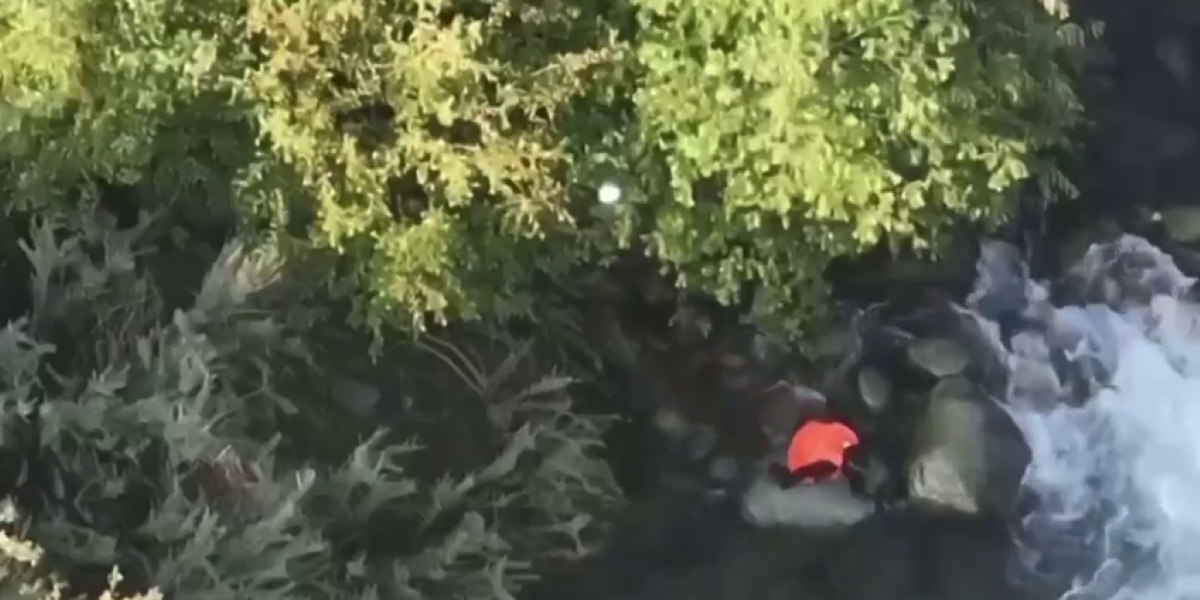
By Alishan Jafri / The Wire
After being granted bail in the two cases for which he was arrested – making offensive and derogatory remarks against women, and hate speech during the now infamous Haridwar Dharma Sansad – Yati Narsinghanand was released from jail last week to a rousing reception from his supporters.
Narsinghanand has been openly pushing his own brand of Hindutva extremism, whose stated goal is the elimination of Islam and the extermination or deportation of Muslims in India. However, he has yet to be charged under the Unlawful Activities (Prevention) Act, or UAPA, despite the fact that the criteria set by the state to charge others under this contentious law fits him to a T, for terror.
While the Act itself has come under legitimate criticism for the unchecked power it grants the state, and has been used indiscriminately against journalists, activists, and students speaking out against the state. it is notably missing in action when it comes to the case of this militant Hindutva leader whose activity and nexus to violence have been widely documented.
Who is a terrorist?
While defending the controversial amendments that his government introduced to UAPA in July 2019, Union home minister Amit Shah gave parliament four criteria to define a person as a terrorist.
The irony is that Narsinghanand satisfies all four criteria, something which is patently not the case when it comes to the anti-CAA and Bhima Koregaon protestors who are now languishing in jail under the law.
Narsinghanand has been openly pushing his own brand of Hindutva extremism, whose stated goal is the elimination of Islam and the extermination or deportation of Muslims in India. However, he has yet to be charged under the Unlawful Activities (Prevention) Act, or UAPA, despite the fact that the criteria set by the state to charge others under this contentious law fits him to a T, for terror.
While the Act itself has come under legitimate criticism for the unchecked power it grants the state, and has been used indiscriminately against journalists, activists, and students speaking out against the state. it is notably missing in action when it comes to the case of this militant Hindutva leader whose activity and nexus to violence have been widely documented.
Who is a terrorist?
While defending the controversial amendments that his government introduced to UAPA in July 2019, Union home minister Amit Shah gave parliament four criteria to define a person as a terrorist.
The irony is that Narsinghanand satisfies all four criteria, something which is patently not the case when it comes to the anti-CAA and Bhima Koregaon protestors who are now languishing in jail under the law.
“If an individual participates in terrorist activities, should they be declared as a terrorist or not? Can anybody have disagreements on this?” Shah had asked parliament. This raises the question of what constitutes terrorist activity.
Apart from Chapter IV of UAPA, which contains several offences which Narsinghanand could easily be charged with, the conspiracy to commit genocide and public incitement or call for group killing is considered a crime against humanity according to Article 3 of the Genocide Convention, of which India is a signatory.
Haridwar’s hate assembly was a call for the genocide of Indian Muslims, attacks on Christians and religious places of minorities and pertinently, a call to arms against the state’s law enforcement machinery. It sent a chilling message to India’s minorities.
More recently, an associate of Narsinghanand named Pinky Chaudhary attempted to assassinate Asaduddin Owaisi, the All India Majlis-e-Ittehadul Muslimeen (AIMIM) chief and MP from Hyderabad. Narsinghanand himself has made threats in the same vein – in an article on “how Narsinghanand scared Owaisi” on the right-wing propaganda website ‘Kreately’, there is a direct reference to shooting Owaisi. The article lauds Narsinghanand’s violent messages and mentions that when he learned that Owaisi wanted to hold a rally in Ghaziabad in 2014, Narsinghanand allegedly declared that he would shoot Owaisi, or have him shot by an affiliate.
We know that a previous Dharam Sansad by Narsinghanand was organised right before the Delhi elections of 2020. It was made evident that the persistent call for violence against Muslims in the run-up to the riots was not abstract advocacy, but an integral component of the genuine conspiracy behind the riots in New Delhi – done in the open because they knew the police would never touch them.
As The Wire reported at the time, if the Delhi Police chose to, they could have easily put together a dossier of video evidence against Yati Narsinghanand that would be far more lethal than the tame anti-CAA activists’ comments that are included in the official chargesheet against them. At a time when Umar Khalid is being questioned for what might be going on in his mind and remains in jail without bail, this crucial piece of evidence against the real perpetrators has remained untouched.
The Wire’s investigation into the North East Delhi violence conclusively showed that one of his close associates, Deepak Singh Hindu of the ‘Hindu Force’, issued a video appeal on the morning of February 23, 2020, for his supporters to gather in strength at Maujpur chowk at 2:30 pm to join the “Dharam Yudh”, when BJP leader Kapil Mishra made a provocative speech. Mishra had raised lakhs of rupees for Narsinghanand and had met him at least twice before Yati finally started hitting headlines daily.
We also know that at least one rioter – RSS activist Ankit Tiwari, whom we profiled in the first phase of our investigation into the real conspiracy behind the Delhi riots – was present at some of Narsinghanand’s gatherings. Tiwari had claimed to personally know the Jamia shooter, another ardent follower of Narsinghanand. He was also in the audience at the Jantar Mantar gathering on December 25, 2019, where Yati urged violence against Muslims. On his Facebook page, Ankit Tiwari had released a video of the same speech. Furthermore, Narsinghanand was also linked to Ragini Tiwari, the lady whose incendiary hate speech videos, as well as pelting stones and commanding the Hindu mobs at Maujpur, went viral.
A day before the riots, Yati had called upon his followers to finish Islam from its roots. This was his final message before the violence in North East Delhi: “Good people should live and let good people live but those who are our enemies, who are enemies of our religion, who want to wipe us out, until we finish them off, until we remove this evil from society known as Islam, how can we survive? Live and let live can only be for civilised people, not for uncivilised thieves, not for terrorists, not for jihadis.(sic.) Such people cannot be given the right to live.”
2. Promoting and funding terrorism
“Should not a person who promotes and funds terrorism be called a terrorist? Gentlemen, I believe that they should be called a terrorist!” Shah had remarked.
Section 17 of UAPA deals with ‘Punishment for raising funds for terrorist act’. Narsinghanand has offered 1 crore rupees to anyone who is ready to be the Prabhakaran or the Bhindranwale for Hindus. Velupillai Prabhakaran was the founder and leader of the Liberation Tigers of Tamil Eelam (LTTE), an armed group that sought an independent state for Sri Lankan Tamils. The LTTE was banned in India. Former Indian Prime Minister Rajiv Gandhi was assassinated by Prabhakaran and the LTTE.
Yati also extended his support to the family and lawyer of Shambhu Lal Regar, the man who had hacked and burnt a Muslim labourer called Afrazul to death while making his minor nephew film and broadcast the murder. Regar’s effigy was paraded along with that of lord Ram on Ram Navami. Regar’s supporters even hijacked the Udaipur Sessions courts and unfurled a saffron flag on its roof as a protest. Yati had also extended support to Yogesh Raj in Bulandshahr, the main accused in the murder of inspector Subodh Kumar Singh.
A mob of Hindutva men vandalised a Sai Baba shrine in Shahpur Jat, Delhi, in April. Narsinghanand is said to have encouraged the main attacker, Padam Panwar, a south Delhi businessman. He then appeared in a video with Narsinghanand, who complimented him on demolishing the “jihadi’s idol” and added, “If I had my way, such ‘jihadis’ would never be allowed in our temples.”
3. Terror planted through literature
Shah added “And then there are those who plant the literature and theory of terrorism in the minds of the youth. I believe that they should be called a terrorist.”
The literature which was distributed to the youths in Haridwar or the pamphlets distributed by Narsinghanand’s aides at the “Mulle kaate jayenge” rally at Jantar mantar are a testament to what terror literature might look like.
This is a translated excerpt from that pamphlet:
“How will you kill these Muslims if you fall in the trap of law and constitution? We will have to eliminate them from India, then the Islamic caste with all our heart. Nothing is impossible on earth. If you remove your fear, they will be destroyed from our earth. The earth on which Parashurama took birth, the earth on which Rama took birth, the earth on which Krishna took birth, we freed the earth from the tyrants. All three also fought on earth. Where did the war inside you go? Take out your war from within because the crusade is bigger than the law and the constitution. Join me, I promise that I will eliminate this Islam from India, from the whole world.”
4. Terrorism spread through propaganda
The fourth and final point in Shah’s speech was, “Terrorism doesn’t spread through the barrel of a gun. It spreads through the frenzy and hate propaganda.” (sic).
BBC journalist Vineet Khare accused Yati and his followers of pushing and attacking the BBC team because they were asking tough questions, while calling him a terrorist, Islamist, and jihadi.
Khare’s team was searched for their cameras, equipment, and vehicle. Their Aadhaar and identity cards were scanned as well. Narsinghanand and his associates allegedly held them captive against their will, according to Vineet. They were allegedly assaulted and verbally abused. The Dasna priest has been charged under Sections 341, 352 (assaulting or forcefully restraining a person without significant and unintentional provocation), 504 (intentional insult with the aim to disturb the peace), and 506 (intentional insult with the intent to disturb the peace).
What preceded this attack was a question by Vineet to Narsinghanand: “A senior lawyer says that the police should have booked you under more stringent charges like the UAPA.” He was interrupted by Narsinghanand who said, “Do I have a weapon or should I get booked under UAPA only for speeches?”
Yati Narsinghanand enjoys a massive following both online and in person. He always tells his followers to get ready to die and kill for the cause. As an influential priest and a mahamandleshwar of one of the biggest Hindu Akharas in India, his chilling words are indeed taken seriously by his followers. Under his patronage, a crop of violent and incendiary young men are gaining muscle and strength. It is unbelievable that he can operate without strong political patronage.
The UP police has always treated him with kid gloves and when the UP police eventually attempted to charge Yati under the Goonda Act, according to a speech he himself made, he was spared by his patrons. SSP Pawan Kumar told PTI that they took action under the Goonda Act because of his anti-social behaviour, which included manhandling, attempted murder, hate speeches, and hindering police checks outside the shrine. Yati boasted that Chief Minister Adityanath allegedly reprimanded the authorities for initiating action against Yati.
As advocates of a strong democracy, one may argue that there is no place for UAPA in a civilised society. But even if we agree that emergency laws should not exist in a democracy, while they are there, their flawed and unjust application only to criminalise dissent should also be challenged. Umar, Sharjeel Imam, Rona Wilson, Anand Teltumbde, Siddique Kappan and others have spent hundreds of days in jail without a fair trial. Do they fulfil any of the 4 parameters elaborated by Home Minister Amit Shah?
As long as UAPA exists as a law, surely the one man who fulfils all its criteria is Yati Narsinghanand.
However, Amit Shah’s passionate advocacy against terrorism may not be enough to build a case against Narsinghanand since, according to Prime Minister Narendra Modi, “A Hindu can never be a terrorist.”
This article first appeared on thewire.in






